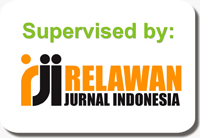Perbandingan Efisiensi Aktual Dan Spesifikasi Generator BTG II Power Plant PT. Semen Tonasa 2×35 MW Pada Berbagai Beban Aktual
DOI:
https://doi.org/10.31961/eltikom.v6i2.554Keywords:
Actual Load, BTG Power Plant, Generator Efficiency, Steam TurbineAbstract
The efficiency of generators in a power plant decreases as running duration increases. This can also happen to the generator of the PT. Steam Power Plant. The Semen Tonasa Power Plant is also known as the Boiler Turbine Generator (BTG) Power Plant. BTG II has been operating for approximately 8 years and based on generator operation data, there has been a decrease in the power generated by the genera-tor, when viewed from the power input to the current turbine, compared to the initial operation of this plant. The aims of this study are to assess the value of the real generator efficiency and compare it to the efficiency generator based on its specifications. Data loading is required to ascertain the true value of generator efficiency, as the output power created by the generator and the input power is the power gen-erated by the turbine, which is computed using the enthalpy reduction method. According to the research, the average generator efficiency values for generator units C and D are 91.36 percent and 90.34 percent, respectively, with real average loads of 25,56 MW and 25,08 MW. In comparison to the data standards, generator unit C saw a 6.76 percent drop in efficiency, whereas generator unit D experienced a 7.76 per-cent decrease efficiency. Comparison with the data specifications for generator units C experienced a decrease in efficiency of 6,76% while generator unit D experienced a decrease in efficiency of 7,76%. The efficiency of the generator in unit C decreased 0.85% per year, and unit D was 0.97%.
Downloads
References
A. D. Putra, “Studi Potensi Limbah Biomassa Kelapa Sawit Sebagai Pembangkit Listrik Tenaga Uap (PLTU) di PT. Pekerbunan Nusantara XIII PKS Parindu,†Jurnal Teknik Elektro Universitas Tanjungpura, vol. 2, no. 1, 2017.
A. Purwanti, P. E. Pambudi, dan W. Handajadi, “Ampas Tebu sebagai Bahan Bakar Alternatif pada Pusat Listrik Tenaga Uap (PLTU),†Jurnal Elektrikal, vol. 2, no. 1, hal. 1–13, 2015.
D. Cahyadi dan Hermawan, “Analisa Perhitungan Efisiensi Turbin Generator QFSN-300-2-20B Unit 10 dan 20 PT. PJB Ubjom PLTU Rembang,†Semarang, 2015.
F. Wildani, S. Syarifuddin, dan S. Thaha, “Analisis Efisiensi Generator Pada Unit 1 Pembangkit Listrik Tenaga Uap 2x25 MW PT. Rekind Daya Mamuju,†dalam Seminar Nasional Teknik Elektro dan Informatika (SNTEI), 2021, hal. 63–67.
M. Muharrir dan I. Hajar, “Analisis Pengaruh Beban Terhadap Efisiensi Generator Unit 2 PLTP PT. Indonesia Power UPJP Kamojang,†KILAT, vol. 8, no. 2, hal. 93–102, Okt. 2019, doi: 10.33322/kilat.v8i2.643.
E. K. Rolando Samosir, Danial, “Analisa Efisiensi Isentropik Turbin Uap Pembangkit Listrik Tenaga Biomassa (Pltbm),†JTRAIN: Jurnal Teknologi Rekayasa Teknik Mesin, vol. 1, no. 1, 2019.
W. Wisnaningsih, “Perencanaan Turbin Uap Penggerak Generator dengan Daya 100 MW pada 3000 rpm,†Teknika Sains : Jurnal Ilmu Teknik, vol. 4, no. 1, hal. 33–40, Jun. 2019, doi: 10.24967/teksis.v4i1.637.
Siemens, “Manual Book Siemens Steam Turbine SST-300.†2011.
T. H. A. Santosa, M. Nadjib, T. Thoharudin, dan W. K. Suyono, “Pengukuran Koefisien Perpindahan Kalor Evaporasi Refrigeran R-134a di dalam Saluran Halus Horizontal dengan Variasi Kualitas Uap,†ROTASI, vol. 20, no. 1, hal. 39, Jan. 2018, doi: 10.14710/rotasi.20.1.39-45.
S. F. Nur dan I. G. E. Lesmana, “Analisis Pengaruh Turbine Washing Terhadap Efisiensi dan Daya Pembangkit Turbin Uap,†Jurnal Asiimetrik: Jurnal Ilmiah Rekayasa & Inovasi, vol. 3, no. 3, hal. 79–88, 2021, doi: 10.35814/asiimetrik.v3i2.2094.
S. Sudadiyo dan J. S. Pane, “Desain Awal Turbin Uap Tipe Aksial untuk Konsep RGTT30 Berpendingin Helium,†JURNAL TEKNOLOGI REAKTOR NUKLIR TRI DASA MEGA, vol. 18, no. 2, hal. 65, Jun. 2016, doi: 10.17146/tdm.2016.18.2.2319.
E. Yohana dan R. Romadhon, “Analisa Efisiensi Isentropik dan Exergy Destruction Pada Turbin Uap Sistem Pembangkit Listrik Tenaga Gas dan Uap,†ROTASI, vol. 19, no. 3, hal. 134, Sep. 2017, doi: 10.14710/rotasi.19.3.134-138.
D. R. Pattiapon, J. J. Rikumahu, dan M. Jamlaay, “Penggunaan Motor Sinkron Tiga Phasa Tipe Salient Pole sebagai Generator Sinkron,†Jurnal Simetrik, vol. 9, no. 2, hal. 197–207, 2019.
M. Simalango, “Penerapan Metode Interpolasi Linear pada Pembesaran Citra,†Informasi dan Teknologi Ilmiah (INTI), vol. 4, no. 3, hal. 866–878, 2017, [Daring]. Tersedia pada: http://tunasbangsa.ac.id/ejurnal/index.php/jsakti/article/view/383.
ABB AB, “Manual Book ABB AMS, 1250 LD Generator.†2010.
A. Sunarso dan B. P. Lapanporo, “Studi Unjuk Kerja Pembangkit Listrik Tenaga Arus Sungai di Sungai Buduk Dusun Nibung Desa Sahan Kecamatan Seluas Kabupaten Bengkayang,†POSITRON, vol. 6, no. 1, hal. 29–34, 2016.
M. M. N. Rizca, Q. Sholehah, dan S. Siswanto, “Analisis Beban Generator Terhadap Nilai Heat Rate dan Efisiensi PLTU (Studi Observasional di PT. Indocement Tunggal Prakarsa, Tbk P-12 Tarjun – Kalimantan Selatan),†Scientific Journal of Mechanical Engineering Kinematika, vol. 3, no. 2, hal. 73–84, Des. 2018, doi: 10.20527/sjmekinematika.v3i2.13.
Downloads
Published
How to Cite
Issue
Section
License
Copyright (c) 2022 Jurnal ELTIKOM : Jurnal Teknik Elektro, Teknologi Informasi dan Komputer

This work is licensed under a Creative Commons Attribution-NoDerivatives 4.0 International License.
All accepted papers will be published under a Creative Commons Attribution 4.0 International (CC BY 4.0) License. Authors retain copyright and grant the journal right of first publication. CC-BY Licenced means lets others to Share (copy and redistribute the material in any medium or format) and Adapt (remix, transform, and build upon the material for any purpose, even commercially).




